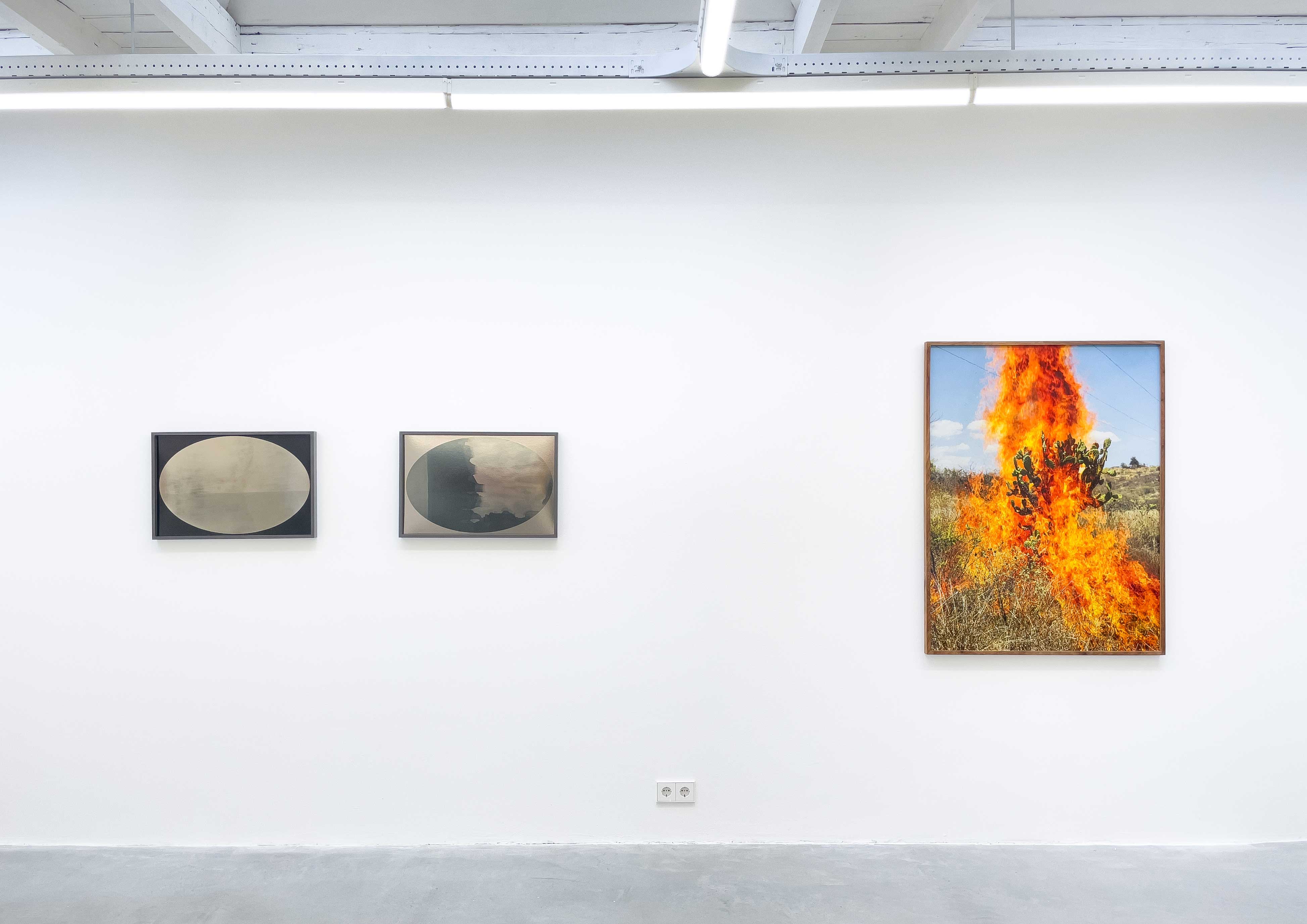Amsterdam
17 September - 26 October 2024Latent Landscapes

Latent Landscapes, 2024, installation view
STEVENSON is pleased to present Latent Landscapes a group show exploring the ways in which landscape can reflect other realms or dimensions. Lands are inhabited and traversed, experienced on a very tangible level, and in the process they become repositories of historical, economic and social dynamics; as metaphor, they allude to complex structures, personal or collective, in which many variables are at play. The works on show, created between 2012 and 2024, offer a window into the tensions between what is immediate and what is emergent in the environment through diverse approaches to the photographic medium.
Bruno Boudjelal's Paysages du Départ were taken on the coast of North Africa where illegal immigrants depart for European shores. The series started in 2012 with over-exposures ‘on a winter day full of white light’, inspiring Boudjelal to create images that capture the longing and sadness of these uncertain journeys, evoking the last elusive impression remaining in the minds of those who leave their native country. In 2022, during a residence at La Capsule in Le Bourget, the artist met master printer Philippe Bréson and decided to print the images using the process of gum bichromate; the pigment used is made of crushed stones from the shores Boudjelal photographed - the landscape sits literally on the prints.
Lisa Oppenheim’s landscapes similarly translate complex experiences of displacement and memory into the photographic image. The works stem from one of the recurring preoccupations of the artist: how to depict what no longer exists or is invisible. These images were created in the darkroom from descriptions of paintings looted from a Dutch art collection during the Second World War. In the absence of documented images, Oppenheim relied on fragmented information such as medium, title or dimension to create abstract images in which she tries to evoke the original work.
Materiality and the capacity of images to act as record keepers are also at the core of Moshekwa Langa’s photographic and mixed-media collages. Akin to layered topographical maps, the surfaces are thick with colour and the residue of daily life, becoming a visual diary that speaks of places and relationships alike.
Robin Rhode’s monochromatic Cederberg landscapes move the viewer inland. Here, the artist is seen playfully interacting with timeless rock formations, articulating the desire to be held by the natural world while alluding to the impossibility of true communion.
Nature is portrayed as ambiguous and symbolic in richly coloured works by Viviane Sassen and Pieter Hugo. Their images depict, respectively, a root that - via a pattern of white paint - becomes an entangled river delta, and a ‘burning bush’ - in the form of cacti on fire - to create visual idioms hinting at mythologies and magic realism.
Guy Tillim and Edson Chagas present images of the urban environment through their unique and single edition works. The former’s painterly interventions on prints of Graaff-Reinet and Port Elizabeth/Gqeberha steer street scenes towards abstraction, opening the possibility of multiple readings. In contrast, the textured colour fields of Chagas’ Common Walls portray a city by looking closely at its details. Taken across the streets of Lisbon - in a square format to mimic the idea of the ‘square metre’ though which the value of structures is assessed – this group of images is sculpture-like, and it carries the materiality of the walls while highlighting the lived dialectic of protection and exclusion.
In Landscaping Jo Ractliffe turned her attention both to the content of the landscape as well as the context of the genre; of this body of work, she says: ‘I have always struggled with the term (landscape), the way it speaks to a view rather than actual concrete space – and how it seems to conflate this view, or representation, with the actual place itself.’ It is the complicated relationship between place and its representation that comes to the fore in the black and white silver gelatin prints on exhibition.
The exhibition opens Tuesday 17 September, 6 to 8pm. A walkabout with curator Federica Angelucci will take place on Friday 20 September at 10.30am.

